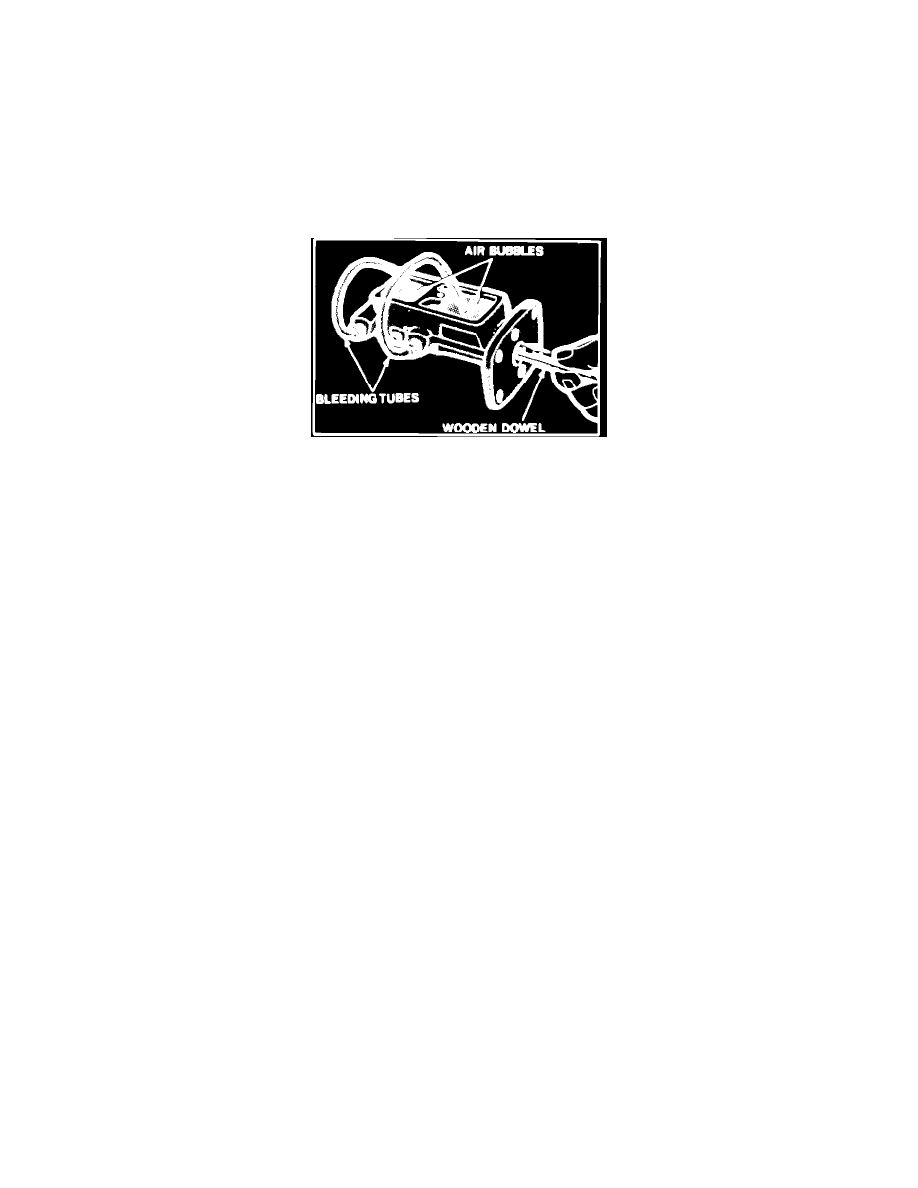Acclaim L4-153 2.5L SOHC Turbo (1989)

Brake Master Cylinder: Service and Repair
Master Cylinder Bleeding
Notes and Precautions
Combination valves containing brake warning or pressure differential type valves are self-centering. They will reset after hydraulic system pressure is
equalized, and by doing the following: Upon completion of bleeding the hydraulic system, depress the brake pedal with moderate force. The brake
warning lamp will turn off when the switch is re-centered.
Bench Bleeding
Fig. 36 Common Means Of Bench Bleeding A Master Cylinder
When replacing or overhauling a master cylinder it is advisable to bleed it before installing it on the car.
1.
Properly support master cylinder assembly and attach special bleeding tubes as shown.
2.
Fill reservoir with approved brake fluid.
3.
Using a wooden stick or dowel (cars with power brakes) depress pushrod slowly and allow the pistons to return under pressure of the springs. Do
this several times until all air bubbles are expelled.
4.
Remove bleeding tubes from cylinder and install cover and gasket.
5.
Install master cylinder onto vehicle, refer to Brakes and Traction Control/Brakes/Hydraulic System/Master Cylinder, Brakes/Service and
Repair.
6.
Bleed the entire hydraulic system as described previously.
Manual Bleeding
1.
Ensure master cylinder reservoir is full. Add suitable brake fluid as needed, and securely reinstall the master cylinder cap.
2.
Position a drain pan under the master cylinder.
3.
Have an assistant depress the brake pedal with a slow even pressure and hold it. Do not depress brake pedal fully to the end of the master
cylinder stroke. This may cause damage to the master cylinder.
4.
Loosen the brake lines, or bleeder valves if equipped, at the master cylinder. Watch for air bubbles in the fluid and listen for air escaping from the
system. While bleeding the system, recheck brake fluid supply in the master cylinder often so as not to allow the master cylinder to run
dry.
5.
With brake pedal still depressed, tighten the brake lines or bleeder valves.
6.
Bleed the master cylinder until all air is removed. Upon completion of bleeding, proceed as follows:
a. Ensure the master cylinder reservoir is full. Add suitable brake fluid as needed, and securely reinstall the master cylinder cap.
b. Ensure brake pedal is firm, and braking operation is proper.
Pressure Bleeding
1.
Ensure master cylinder reservoir is full. Add suitable brake fluid as needed.
2.
Install pressure bleeder according to manufacturer specifications.
3.
Position a drain pan under the master cylinder.
4.
Loosen brake lines, or bleeder valves if equipped, at the master cylinder. Watch for air bubbles in the fluid and listen for air escaping from the
system.
5.
Retighten brake lines or bleeder valves.
6.
Bleed the master cylinder until all air is removed. Upon completion of bleeding, proceed as follows:
a. Ensure the master cylinder reservoir is full. Add suitable brake fluid as needed, and securely reinstall the master cylinder cap.
b. Ensure brake pedal is firm, and braking operation is proper.
